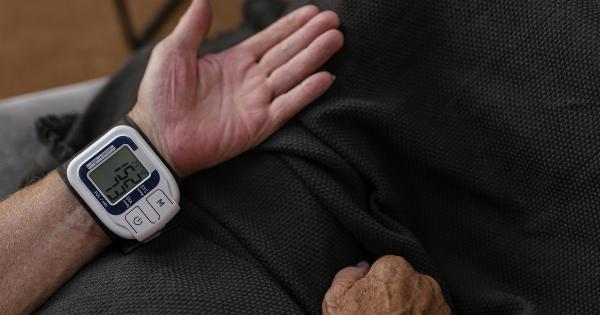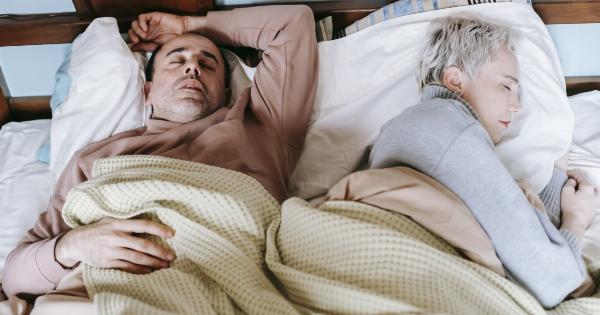When exposed to a cold environment for too long, the body’s core temperature can drop to dangerously low levels, leading to a condition called hypothermia. Hypothermia is a serious medical emergency that requires immediate attention.
Knowing how to recognize the signs of hypothermia and what actions to take can potentially save a person’s life. In this article, we will explore the different stages and symptoms of hypothermia, as well as provide crucial steps to take when hypothermia strikes.
Understanding Hypothermia
Hypothermia occurs when the body loses heat faster than it can produce it, resulting in a core temperature below 95°F (35°C).
It can happen in various cold environments, such as during winter activities, outdoor adventures, or even in indoor settings with inadequate heating. Prolonged exposure to cold water can also cause hypothermia.
Hypothermia can affect anyone, regardless of their age or general health.
However, certain factors can increase the risk, including elderly individuals, infants, people with medical conditions like diabetes or thyroid problems, and those under the influence of alcohol or drugs.
The Stages and Symptoms of Hypothermia
Hypothermia typically progresses through three stages. Recognizing these stages, along with their accompanying symptoms, is essential for prompt intervention:.
Mild Hypothermia
Mild hypothermia occurs when the core body temperature ranges between 90-95°F (32-35°C). Symptoms may include:.
- Shivering and teeth chattering
- Goosebumps and cold, pale skin
- Slurred speech and mental confusion
- Fatigue and poor coordination
- Increase in heart rate and breathing rate
Moderate Hypothermia
Moderate hypothermia occurs when the core body temperature drops between 82-90°F (28-32°C). Symptoms at this stage may include:.
- Intense shivering or shivering ceasing
- Blue-tinged skin and numbness
- Lack of coordination and difficulty walking
- Confusion and disorientation
- Slowed breathing and heart rate
Severe Hypothermia
Severe or profound hypothermia occurs when the core body temperature falls below 82°F (28°C). Symptoms at this stage may include:.
- Loss of consciousness or unconsciousness
- Very low or undetectable breathing
- Weak or irregular pulse
- Pale or ashen skin
- Dilated pupils
Actions to Take When Hypothermia Strikes
When hypothermia is suspected, it is crucial to take immediate action. Here’s what you should do:.
1. Seek Shelter and Remove Wet Clothing
Moving the person to a warm and dry environment like a shelter is the first step. Remove any wet clothing and replace them with warm, dry layers. Cover the individual with blankets or jackets to help trap their body heat.
2. Call for Medical Help
Contact emergency services or a healthcare professional for medical assistance. Hypothermia is a serious condition that necessitates proper medical evaluation and treatment.
3. Gradual Re-Warming
Re-warming the body should be done gradually to avoid shock. Do not apply direct heat, such as hot water, heating pads, or heating lamps, as it can cause burns. Instead, use warm blankets and your body heat to help warm the person.
Encourage them to move gently and avoid sudden or vigorous activity.
4. Provide Warm Drinks and High-Energy Foods
If conscious and alert, offer warm drinks, preferably non-alcoholic, to the person. Warm liquids can help raise the body temperature. Additionally, providing high-energy foods like chocolate or snack bars can contribute to increasing their energy levels.
5. Monitor Breathing and Pulse
Continuously monitor the person’s breathing and pulse. If they stop breathing or have an undetectable pulse, CPR may be necessary. If you are trained in CPR, perform it according to the guidelines. Otherwise, wait for medical professionals to arrive.
6. Prevention is Key
Preventing hypothermia is better than dealing with it. Here are some preventive measures to keep in mind:.
- Dress appropriately for cold weather
- Layer clothing to trap warmth
- Wear moisture-wicking and insulating fabrics
- Stay hydrated and nourished
- Avoid excessive alcohol or drug use
- Take regular breaks to warm up when participating in cold outdoor activities
- Stay informed about weather conditions and forecasts
Seek Immediate Medical Attention
If you suspect someone has hypothermia, it is crucial to seek immediate medical attention. Hypothermia can be life-threatening, and professional medical evaluation and care are essential for a positive outcome.






























